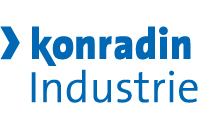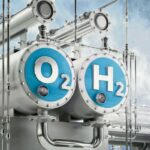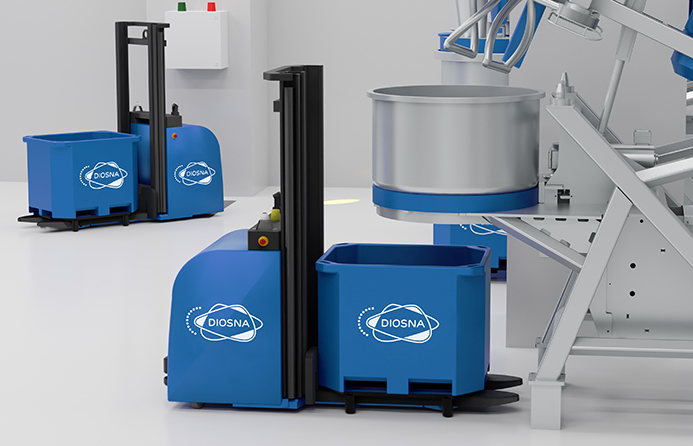Firmen im Artikel
The increasing demand for clean energy sources makes hydrogen a key element in the energy transition. Integrating digital twins into hydrogen production opens up new opportunities when it comes to increasing efficiency and reducing costs — thus helping to ramp up hydrogen production in the face of high production costs. By using simulation models that replicate real plant operation, engineers and operators can optimize plant designs before physical components are built or modified. This approach makes it possible to identify and correct potential problems at an early stage, resulting in shorter development times and reduced costs. For the construction and operation of digital twins, however, it is imperative that the automation technology and industrial software are optimally coordinated. Siemens offers suitable blueprints, pre-planned engineering templates and libraries for
this purpose.
Standardization is Crucial
Unlike the processes that have been established for decades to produce mostly gray hydrogen, the new technologies for producing green hydrogen are typically modular greenfield plants that consist of different package units. The resulting challenge is that each module has its own manufacturer-specific logic, programming and operation. In addition to transmission protocols, the alarms and messages generated by the skids must also be correctly integrated into the control system. The same applies to the visualization of all control parameters. To ensure seamless interoperability of these different systems, standardization is the key to an open and flexible automation concept. Only on this basis can digital twins achieve their full potential.
Simluation and Design
The first step toward digital twins in hydrogen production is the design process for greenfield plants. To determine optimal process designs for a plant, simulations are run using process modeling software, such as gPROMS from Siemens, which captures process knowledge in mathematical models that describe the physics and chemistry of the process flows.
To illustrate and refine the process engineering concept in the next step, the previously collected process data is used for the process flow diagram (PFD), after which the more detailed piping and instrumentation diagrams (P&IDs) are created. An engineering tool like COMOS helps to create the digital twin for the various disciplines of plant engineering, such as process, electrical, systems and piping and automation.
The entire automation of the plant must then be designed and engineered (detailed engineering), including circuit diagrams, wiring and the distributed control system (DCS). The corresponding DCS hardware, such as remote IOs or controllers, must be placed, wired and configured in the field. The same holds true for the DCS software that needs to be designed and implemented. The Plant Automation Accelerator from Siemens provides an integrated engineering approach for this. After DCS engineering, the critical phase of acceptance testing and commissioning begins. The SIMIT software makes it possible to simulate the DCS behavior for virtual commissioning. By reusing the data from the process control system, Simit, Comos and gPROMS, the entire system behavior can be simulated prior to commissioning. The combination of these applications also ensures that the data of the digital twins is always up to date. If a 3D model of a plant is also available, Comos Walkinside can be used to train operating personnel at an early stage using virtual reality. This approach also makes it easier to achieve a low-disruption operating phase. To accomplish this, it is essential to enrich plant and operating data as well as documentation with both real-time and historical data.
Faster Time to Market
Clearly, digital twins reduce the time and effort required for on-site commissioning to a minimum, minimize error, and can cut the project costs of a plant by around 15% — while also decreasing the commissioning time by as much as 30%. By combining the four applications Comos, gPROMS, Simit and the DCS system (Simatic PCS 7 or Simatic PCS neo), it is possible to ensure that the digital twin is always current by continually updating the data. In engineering, automation and simulation, plant productivity and performance are optimized through the use of predictive models that are an accurate reflection of the actual plant.
Electrolyzer Considerations
Electrolyzers are the core component of a green hydrogen plant. Their capacity cannot be scaled at will. Instead, multiple electrolyzers are operated in parallel by numbering up to increase the output of a plant. Once you have a digital twin of the electrolyzers, you can easily design a hydrogen plant by using copy and paste or drag and drop. In the future, this approach can be used to copy and replicate entire H2 plants. This digital plant forms the foundation for scaling up the electrolysis business. The previously mentioned simulation models will then run in the background in parallel with plant operation and detect any deviations from optimum operation. This ultimately makes it possible to find the most efficient and material-friendly operating modes for hydrogen plants.
Existing System Integration
Digital twins also facilitate the integration of H2 production plants into existing energy systems. By accurately simulating plant operation, operators can better understand how their plants will respond to a fluctuating energy supply from renewable sources and how best to integrate them into the broader energy grid. This capability is critical to maximizing the role of hydrogen as an energy storage medium and increasing the flexibility of the energy system as a whole. Weather forecasts can also be fed into simulation models of plants, allowing operators to know at an earlier stage how much electricity they need to buy from the market for their plant. This in turn saves costs.
In short, the entire architecture of the digital twin is designed for flexibility that allows plant operators to set their own priorities for hydrogen production.
Axel Lorenz,
CEO
Process Automation
Siemens
Hall 11.0, Stand C3
















